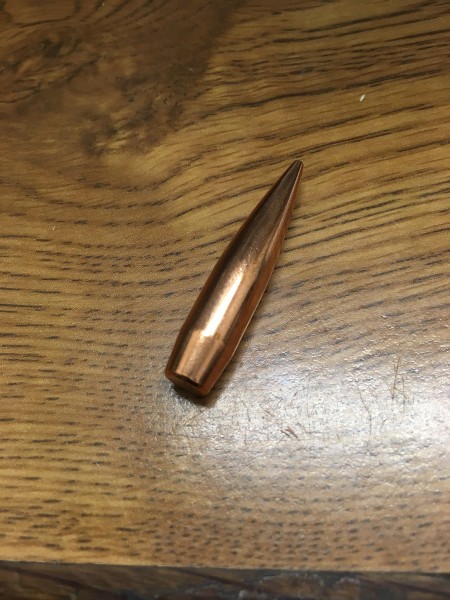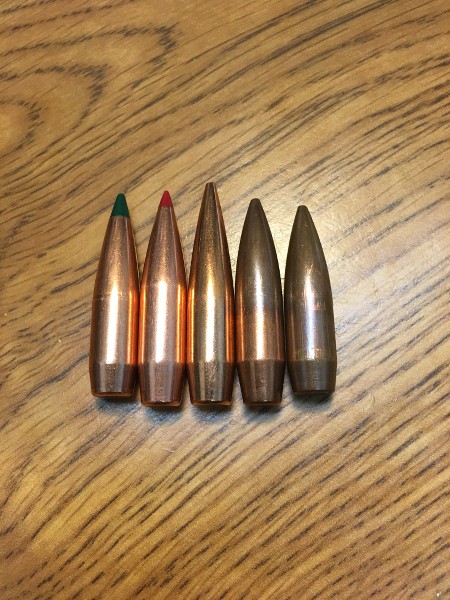You are using an out of date browser. It may not display this or other websites correctly.
You should upgrade or use an alternative browser.
You should upgrade or use an alternative browser.
Ogive , what is it ?
- Thread starter Metal god
- Start date
Marco Califo
New member
Different Ogives
Now that we know ogive is the curve of the projectile forward of the bearing surface, I think it is fitting to add the second part of how ogive is used in reloading. Specifically, Hornady has marketed products with a Secant Ogive. Another is tangent ogive. Neither of these is the older, long round nose used in roughly 1880-1918 by militaries. You can still purchase, for example, 220 gr. 308 diameter bullets, made by Sierra and Hornady, with long rounded soft-points. They penetrate and expand well at modest velocities and are not what you would use for 1000 yard target shooting.
"The exact shape has a definition, and there are two ogive shapes commonly used in high performance rifle bullets: the tangent (or spitzer) ogive, and the secant ogive. The secant ogive tapers more gradually relative to its length than does the tangent ogive, which gives higher BCs and less drag."
http://www.grantcunningham.com/2015...the-hell-should-i-care-whats-an-ogive-anyhow/
So what is the long round nose ogive called???
And How about the ELD bullets?? Are they Secant? Or is there another term?
Now that we know ogive is the curve of the projectile forward of the bearing surface, I think it is fitting to add the second part of how ogive is used in reloading. Specifically, Hornady has marketed products with a Secant Ogive. Another is tangent ogive. Neither of these is the older, long round nose used in roughly 1880-1918 by militaries. You can still purchase, for example, 220 gr. 308 diameter bullets, made by Sierra and Hornady, with long rounded soft-points. They penetrate and expand well at modest velocities and are not what you would use for 1000 yard target shooting.
"The exact shape has a definition, and there are two ogive shapes commonly used in high performance rifle bullets: the tangent (or spitzer) ogive, and the secant ogive. The secant ogive tapers more gradually relative to its length than does the tangent ogive, which gives higher BCs and less drag."
http://www.grantcunningham.com/2015...the-hell-should-i-care-whats-an-ogive-anyhow/
So what is the long round nose ogive called???
And How about the ELD bullets?? Are they Secant? Or is there another term?
Last edited:
I always thought It's pretty clear as to which is which with 30 cal bullets . You can see the
Secant ogive as it quickly tapers off ( 175gr TMK & 195gr ELD )

The Tangent ogive tapers more gradually ( 190gr SMK & 175gr SMK )

The other ogive that I know of is called Hybrid ( 200.20x Berger Hybrid )

Now all together

One of the cool things about that Berger hybrid is its short baring surface considering it's the heaviest bullet in the group , yet has the one of the shortest baring surfaces . The claim is that you can get higher velocities because of that even though it a very heavy 308 bullet .
Secant ogive as it quickly tapers off ( 175gr TMK & 195gr ELD )

The Tangent ogive tapers more gradually ( 190gr SMK & 175gr SMK )

The other ogive that I know of is called Hybrid ( 200.20x Berger Hybrid )

Now all together

One of the cool things about that Berger hybrid is its short baring surface considering it's the heaviest bullet in the group , yet has the one of the shortest baring surfaces . The claim is that you can get higher velocities because of that even though it a very heavy 308 bullet .
Last edited:
MG,
You have it backward. The TMK and ELD are secant ogive bullets. The tangent ogive is the one that departs the bearing surface more gradually. The tangent ogive profile is the section of a circle whose radius is perpendicular to and passing through the bullet and therefore has its origin on that same line. If you extend the bearing surface as a line, you find that line is tangent to the circle that radius makes if you sweep it all the way around from its origin. That's why it is called a tangent ogive; it begins with the bearing surface tangent to it.
The secant ogive has its origin behind a line perpendicular to the bearing surface shoulder, so the circular section that is the ogive starts out already angling toward the point. What makes the secant ogive more aerodynamic is that offset origin lets you use a longer radius so the air moving over the surface travels a shorter, straighter distance making it take less energy to push it aside. The standard tangent ogive used by the military for 30 cal ammunition has a radius 7 calibers long. A typical secant ogive bullet in 30 cals will have a radius 9 to 14 calibers long. That's what causes the more gradual arc.

You have it backward. The TMK and ELD are secant ogive bullets. The tangent ogive is the one that departs the bearing surface more gradually. The tangent ogive profile is the section of a circle whose radius is perpendicular to and passing through the bullet and therefore has its origin on that same line. If you extend the bearing surface as a line, you find that line is tangent to the circle that radius makes if you sweep it all the way around from its origin. That's why it is called a tangent ogive; it begins with the bearing surface tangent to it.
The secant ogive has its origin behind a line perpendicular to the bearing surface shoulder, so the circular section that is the ogive starts out already angling toward the point. What makes the secant ogive more aerodynamic is that offset origin lets you use a longer radius so the air moving over the surface travels a shorter, straighter distance making it take less energy to push it aside. The standard tangent ogive used by the military for 30 cal ammunition has a radius 7 calibers long. A typical secant ogive bullet in 30 cals will have a radius 9 to 14 calibers long. That's what causes the more gradual arc.
Attachments
If you just try to memorize the names, it's easy to flip them. But if you remember your school math teacher showing you a line tangent to a circle and imagine a bullet bearing surface laying inside and against that line and ending where the tangent line touches the circle, the mental picture should help keep it correctly associated with the word tangent.

